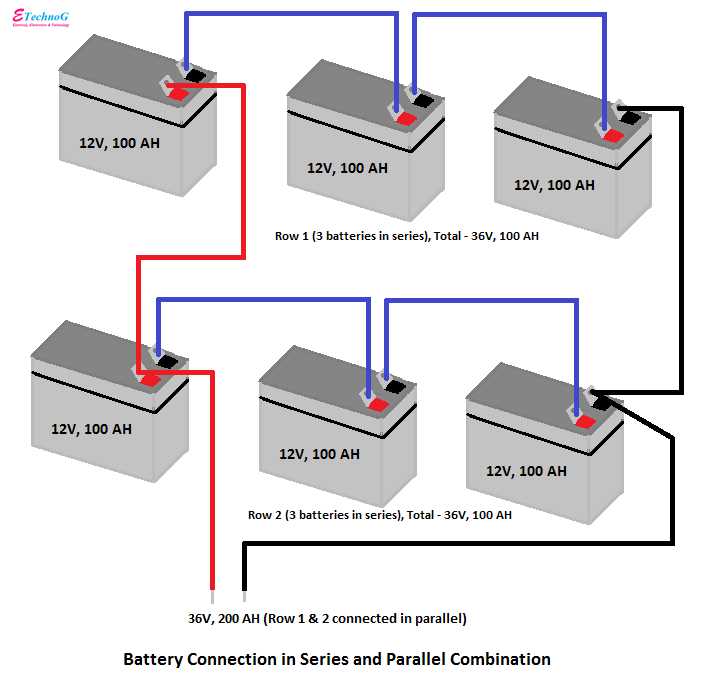
When it comes to power supply, batteries play a crucial role in providing portable and reliable energy. Whether it’s for your car, boat, or electronic devices, understanding how to connect batteries in series can greatly enhance their functionality and performance.
Series battery connection is a method of joining multiple batteries together to increase the total voltage output. By connecting the positive terminal of one battery to the negative terminal of the next battery, you are effectively adding the voltage of each battery in the series. This results in a higher total voltage that can be used to power devices that require more voltage.
For example: if you have two 12-volt batteries and connect them in series, the total voltage output would be 24 volts. This can be incredibly useful for applications that require higher voltages, such as electric vehicles or solar power systems.
When connecting batteries in series, it’s important to keep in mind the overall capacity and compatibility of the batteries. Ideally, all the batteries used should have the same voltage rating and capacity to ensure balanced charging and discharging. Additionally, it’s essential to properly secure and insulate the connections to prevent short circuits or electrical hazards.
Understanding Series Battery Connection Diagrams
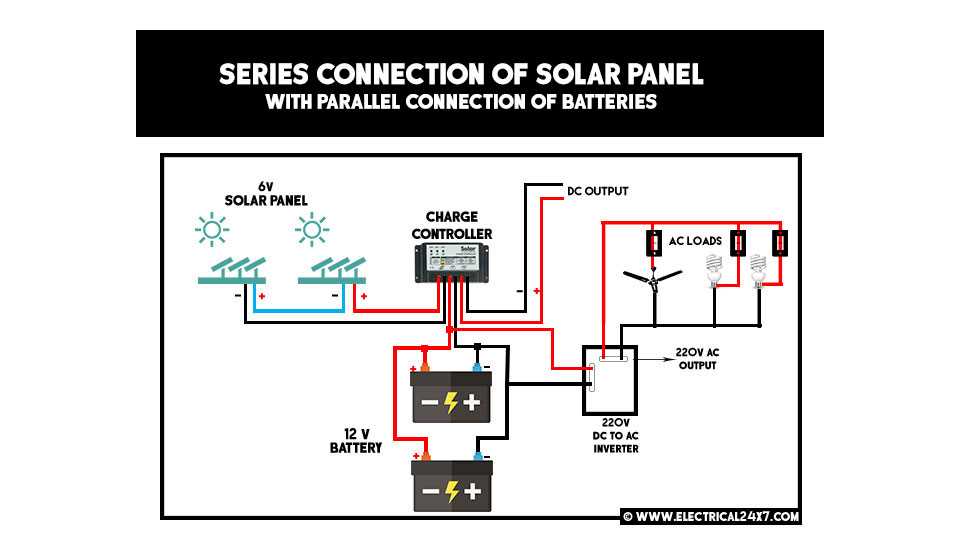
Batteries are often used to power various electrical devices and systems. When multiple batteries are connected together, they can be arranged in different configurations to achieve the desired voltage and capacity. One such configuration is a series connection, where the positive terminal of one battery is connected to the negative terminal of the next battery. Understanding series battery connection diagrams is important for correctly wiring multiple batteries in series.
Series connection provides increased voltage: When batteries are connected in series, the voltage of each battery adds up. For example, if two 12-volt batteries are connected in series, the total voltage will be 24 volts. This increased voltage can be useful in applications that require higher voltage levels, such as electric vehicles or power backup systems.
Proper polarity is crucial: Series battery connection diagrams also ensure that the batteries are connected with the correct polarity. In a series connection, the positive terminal of one battery is connected to the negative terminal of the next battery. If the polarity is reversed, it can lead to short circuits or damage to the batteries and connected devices. Therefore, it is important to carefully follow the series battery connection diagram to ensure correct polarity.
Understanding the series battery connection diagram: The series battery connection diagram typically shows the individual batteries and their terminals, as well as the connections between them. It may also provide information on the total voltage and capacity of the connected batteries. By following the diagram, one can easily determine the correct way to connect the batteries in series.
Considerations when using series battery connections: While series connections can provide higher voltage, it is important to consider some factors. Since the voltage adds up in a series connection, if one battery fails or gets discharged, it can affect the overall performance of the entire series. Therefore, it is important to use batteries with similar characteristics and capacities to ensure balanced charging and discharging. Additionally, proper maintenance and monitoring of the battery system are crucial to prevent overcharging, undercharging, or imbalance in the series connection.
In conclusion, understanding series battery connection diagrams is essential for correctly wiring multiple batteries in series. It allows for increased voltage and ensures proper polarity, which is crucial for the safe and efficient operation of battery-powered devices and systems.
Series battery connection refers to the arrangement of batteries where the positive terminal of one battery is connected to the negative terminal of the next battery, creating a chain-like connection. This connection is also known as a series circuit, as the current flows through each battery in a series, one after another.
In a series battery connection, the total voltage of the batteries is additive. This means that if we have two batteries, each with a voltage of 1.5 volts, the total voltage in the series connection would be 3 volts (1.5 volts + 1.5 volts). Similarly, if we connect three batteries in series, each with a voltage of 1.5 volts, the total voltage would be 4.5 volts (1.5 volts + 1.5 volts + 1.5 volts).
This type of connection is commonly used in various electrical devices and applications where a higher voltage is required. For example, in a flashlight, multiple batteries are often connected in series to provide enough voltage to power the light bulb. Additionally, series battery connections are also used in electric vehicles, like cars and bikes, to achieve the desired voltage for the motor.
Advantages of series battery connections
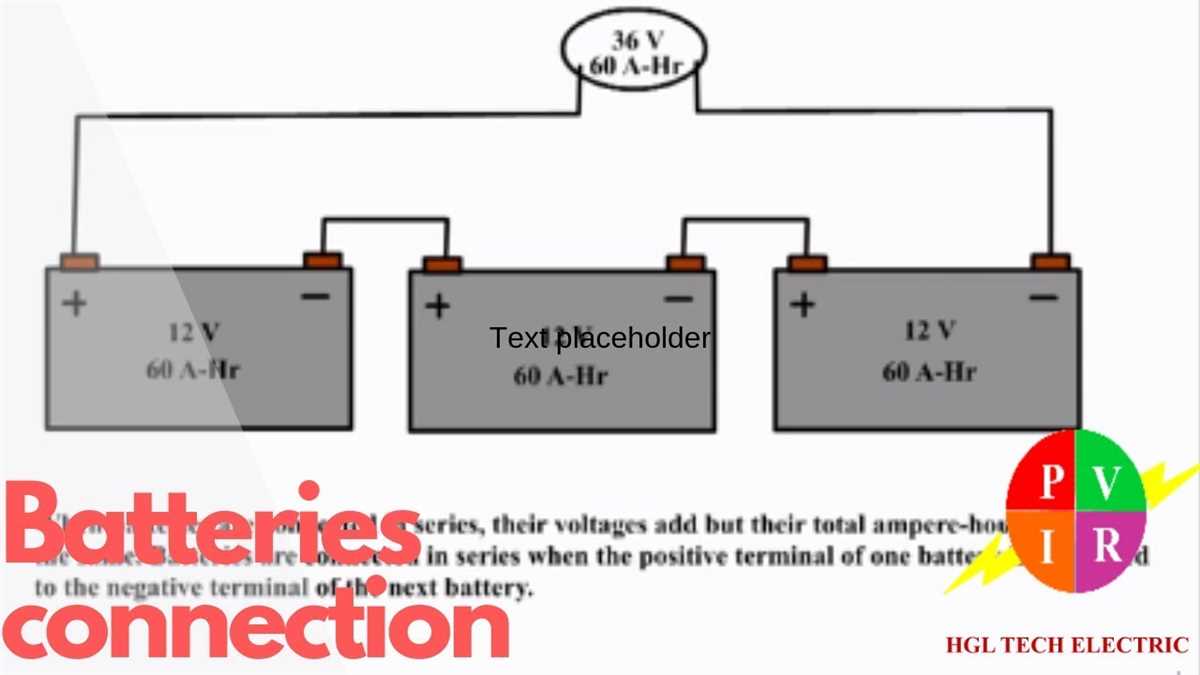
Series battery connections can be beneficial in various applications due to several advantages they offer. Some of the key advantages of series battery connections are:
- Increased voltage: When batteries are connected in series, the total voltage output is the sum of each individual battery’s voltage. This increased voltage can be advantageous in applications that require higher voltage levels, such as in electric vehicles or renewable energy systems.
- Extended battery life: Series battery connections distribute the load evenly across all the batteries, which can help to extend the overall battery life. By evenly sharing the workload, each battery in the series connection carries a smaller percentage of the total load, resulting in reduced strain on individual batteries.
- Flexibility in system design: Series connections allow for greater flexibility in system design. By connecting batteries in series, it is possible to achieve a wide range of voltage levels to meet specific requirements. This flexibility is particularly useful in applications where different voltage levels are necessary to power various components of the system.
- Higher energy storage capacity: Connecting batteries in series increases the energy storage capacity of the overall system. This is beneficial in applications that require a longer duration of power, such as in remote off-grid locations or backup power systems.
- Efficient power distribution: Series battery connections enable efficient power distribution, as the current flows through each battery sequentially. This ensures a consistent flow of electricity throughout the system, minimizing power losses and maximizing overall system efficiency.
In conclusion, series battery connections offer several advantages, including increased voltage, extended battery life, flexibility in system design, higher energy storage capacity, and efficient power distribution. These benefits make series battery connections a viable option in many different applications.
Components required for a series battery connection
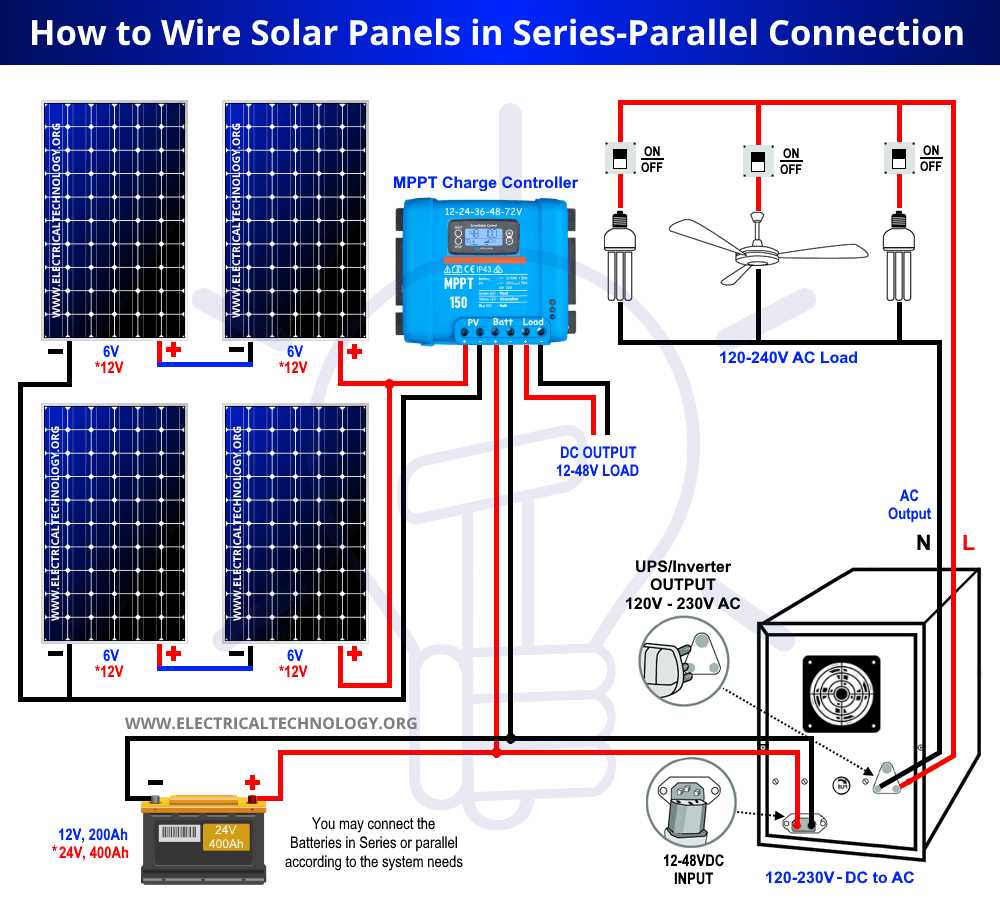
In order to connect batteries in series, there are a few components that are required to ensure the connection is made correctly and safely. These components include:
- Batteries: The most important component is, of course, the batteries themselves. These can be any type of batteries, such as lead-acid, lithium-ion, or nickel-cadmium, depending on the specific application. It is important to choose batteries with the same voltage rating for a series connection.
- Battery cables: High-quality battery cables are essential for a reliable and efficient series battery connection. These cables should be thick enough to handle the current flowing through them and should be properly insulated to prevent any short circuits or electrical hazards.
- Battery terminals: Battery terminals are used to connect the batteries together in series. These terminals should have a secure connection with the battery cables and should be able to handle the high current flowing through them without overheating or causing any voltage drops.
- Terminal connectors: Terminal connectors are used to connect the battery cables to the battery terminals. These connectors should provide a solid and secure connection, ensuring that there is no loss of current or voltage at the connection point.
When connecting batteries in series, it is important to ensure that all components are properly installed and securely connected. Any loose connections or faulty components can lead to inefficiencies, voltage drops, or even electrical hazards. Therefore, it is advisable to double-check all connections and components before using the series battery connection in any electrical system or application.
Step-by-step guide to creating a series battery connection
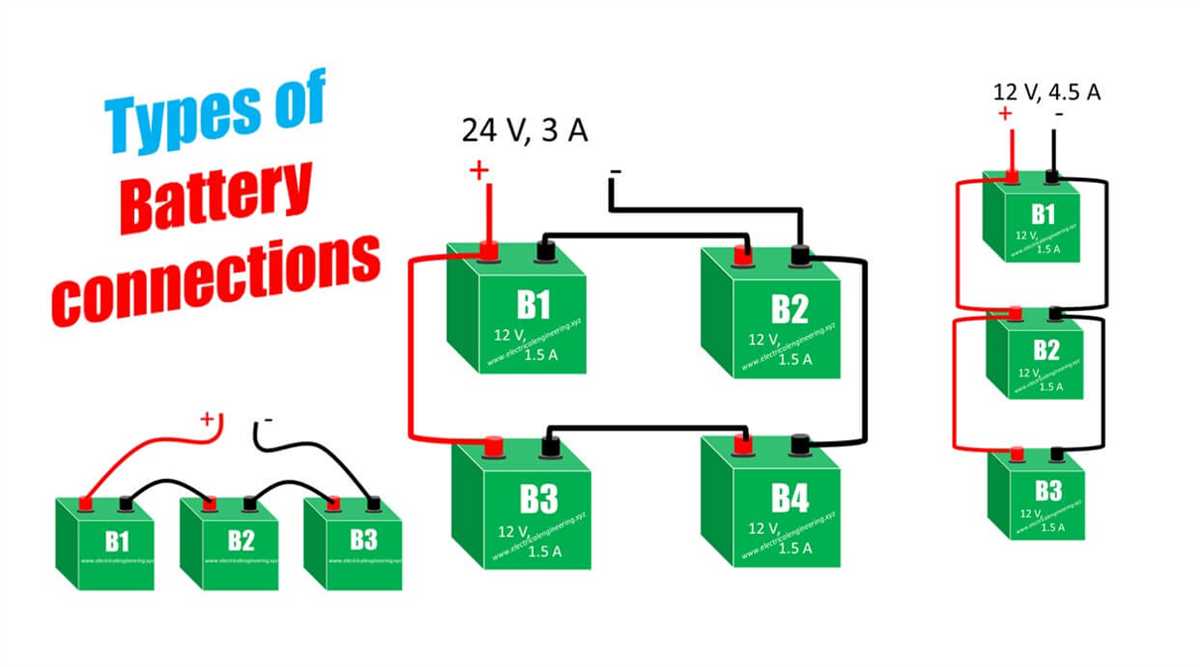
Creating a series battery connection involves connecting multiple batteries together in a series circuit to increase the overall voltage output. This is commonly done in applications where a higher voltage is required, such as in electric vehicles or for powering electronics. Following a step-by-step guide can help ensure a successful series battery connection.
Step 1: Gather the necessary equipment
Before starting the series battery connection, gather all the necessary equipment. This includes the batteries you will be connecting, battery cables or wires, a battery connector or junction box, and any additional tools or accessories needed for installation.
Step 2: Determine the voltage requirement
Identify the specific voltage requirement for your application. This will determine the number of batteries needed and how they should be connected. For example, if your application requires a 24-volt output, you will need to connect two 12-volt batteries in series.
Step 3: Prepare the batteries
Ensure that each battery is fully charged and in good condition. Clean any corrosion or dirt from the battery terminals to ensure a good connection. Additionally, ensure that all batteries being connected are of the same voltage rating and type to avoid any potential issues.
Step 4: Connect the batteries in series
Using battery cables or wires, connect the positive terminal of the first battery to the negative terminal of the second battery. Continue this process until all batteries are connected in series. It is important to ensure that the positive and negative terminals are properly connected to avoid any reverse polarity issues.
Step 5: Secure the connections
Once all the batteries are connected in series, securely fasten the connections using battery connectors, junction boxes, or other appropriate methods. This will help ensure that the connections remain stable and reliable, even in challenging conditions.
Step 6: Test the series battery connection
After completing the series battery connection, it is important to test the circuit to verify that the desired voltage output is achieved. Use a multimeter or voltmeter to measure the voltage across the entire series circuit. If the measured voltage matches the required voltage, the connection is successful.
Following these steps can help you create a series battery connection that provides the desired voltage output for your specific application. It is important to always prioritize safety and follow any additional guidelines or recommendations provided by the battery manufacturer.
Important considerations for series battery connections
In a series battery connection, multiple batteries are connected end to end in order to increase the overall voltage of the system. This type of connection is commonly used in various applications, from small electronic devices to electric vehicles and renewable energy systems. However, there are several important considerations that need to be taken into account when connecting batteries in series.
Battery compatibility: It is crucial to ensure that all the batteries being connected in series have the same voltage and capacity ratings. Mixing different types or models of batteries can lead to imbalanced charging or discharging, which can damage the batteries and reduce their overall lifespan.
Balancing the voltage: Even when using the same type of batteries, there can still be slight variations in their voltage due to manufacturing tolerances or aging. To prevent one battery from being overcharged or discharged more than the others, it is necessary to regularly check and balance the voltage levels of each battery in the series. This can be done using a battery balancer or equalizer.
Proper wiring and connections: When connecting batteries in series, it is important to ensure that the positive terminal of one battery is connected to the negative terminal of the next battery, and so on. This ensures that the voltage adds up across the batteries. It is also important to use proper wiring and connectors that can handle the increased voltage and current of the series connection.
Careful monitoring and maintenance: Series battery connections require regular monitoring to detect any signs of imbalance or failure. It is important to regularly check the voltage levels, temperature, and overall performance of the batteries. Any signs of overheating, leaking, or reduced capacity should be addressed immediately to prevent further damage to the batteries or the entire system. Regular maintenance, such as cleaning the terminals and ensuring proper ventilation, is also necessary for optimal performance and longevity of the batteries.
In conclusion, series battery connections can provide increased voltage for various applications, but it is important to consider battery compatibility, voltage balancing, proper wiring, and regular monitoring and maintenance to ensure the safe and efficient operation of the system.
Common issues and troubleshooting tips for series battery connections
Series battery connections can sometimes encounter issues that can affect the overall performance and safety of the system. It is important to understand these common issues and have troubleshooting tips available to rectify them. Here are some common problems you may encounter when working with series battery connections:
- Uneven voltage distribution: In a series battery connection, if one battery is weaker or has a lower capacity than the others, it can cause an uneven distribution of voltage. This can lead to imbalanced charging and discharging, reducing the overall efficiency of the system. To address this issue, it is recommended to use batteries with similar specifications and capacities.
- Battery imbalance: Over time, the batteries in a series connection can become imbalanced due to factors such as different levels of self-discharge or aging. This can result in one battery becoming more charged or discharged than the others. Regularly monitoring the voltage levels of each battery and performing equalization charging can help address this issue.
- Overcharging or undercharging: Improper charging can cause significant damage to batteries in a series connection. Overcharging can lead to excessive heating, electrolyte loss, and reduced battery life. Undercharging can result in insufficient capacity and reduced overall performance. It is essential to use a suitable charging system and monitor the charging process to prevent overcharging or undercharging.
- Battery failure: In a series battery connection, the failure of one battery can affect the entire system. If a single battery fails, it can cause an interruption in the circuit, reducing the overall voltage and capacity of the system. Regular maintenance, monitoring, and timely replacement of faulty batteries are crucial to prevent system failure.
- Connections and wiring issues: Faulty connections, loose wiring, or poor insulation can lead to voltage drops, overheating, and potential safety hazards. Regularly inspecting the connections, ensuring tight and secure terminals, and using appropriate wiring gauge can help prevent such issues.
Overall, maintaining a well-balanced series battery connection requires careful monitoring, regular maintenance, and timely troubleshooting. By addressing these common issues, you can ensure the optimal performance, longevity, and safety of your series battery connection system.